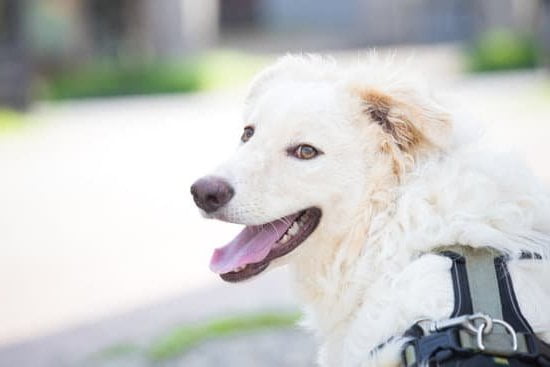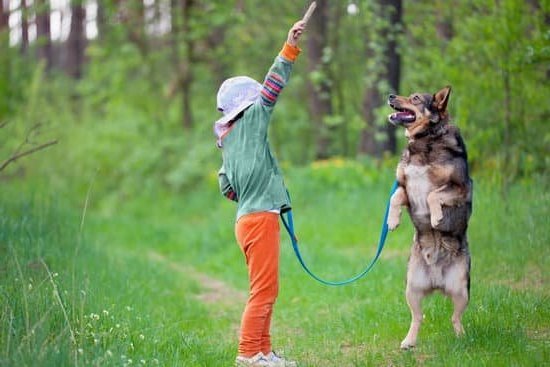How long does it take to train service dogs? Service dogs play a crucial role in the lives of people with disabilities, providing essential assistance and support in various tasks.
The training process for these remarkable animals is extensive and requires specialized techniques to ensure they can fulfill their duties effectively. From understanding the different types of service dogs to exploring the developmental stages and factors influencing their training length, this article delves into the intricate world of service dog training.
Service dogs undergo a rigorous training process that begins from puppyhood and continues until they are fully equipped to assist individuals with disabilities. Understanding the role of service dogs entails recognizing the dedication and commitment involved in preparing these animals for their life-changing work. With a focus on specialized training, developmental milestones, and factors influencing their training length, this article provides valuable insights into the comprehensive process behind shaping these incredible companions.
This section will explore the significance of ongoing training and maintenance for service dogs, showcasing real-life success stories that highlight the impact of these specially trained animals. By shedding light on different approaches to training and emphasizing the importance of continued support, this article aims to offer a comprehensive understanding of the role of service dogs in today’s society.
The Training Process
Early Socialization and Basic Obedience
The training process of a service dog begins at a very young age, typically when they are just a few weeks old. This early stage is focused on socialization and basic obedience training. Puppies are exposed to various environments, sounds, and people to ensure they become well-adjusted and confident in different situations. They also start learning basic commands such as sit, stay, come, and walking on a leash.
Specialized Training for Specific Tasks
As the puppy grows, their training becomes more specialized based on the type of service they will provide. For example, guide dogs for the visually impaired need to learn how to navigate obstacles and safely lead their handlers, while mobility assistance dogs must be trained to retrieve items and provide physical support. Other specialized tasks may include alerting to seizures or providing emotional support for individuals with psychiatric disabilities.
Public Access Training
Another important aspect of training for service dogs is public access training. This involves teaching the dog appropriate behavior in public settings such as restaurants, stores, and public transportation. They must remain calm and focused even in busy or distracting environments. This type of training typically takes several months to ensure that the dog can perform their duties effectively while maintaining good manners in public spaces.
Overall, the process of training a service dog from a puppy to a fully certified assistance animal can take anywhere from 18 months to 2 years depending on the individual dog’s abilities, the specific tasks they need to perform, and the standards set by accrediting organizations. Each step of this journey is essential in developing a highly skilled and reliable service dog that can make a meaningful impact on the life of their handler.
Types of Service Dogs and Their Specialized Training
Guide Dogs for the Visually Impaired
One of the most well-known types of service dogs is the guide dog, which assists individuals who are blind or visually impaired. The specialized training for guide dogs includes teaching them how to navigate various obstacles, including stairs, curbs, and crowded areas. They are also trained to stop at changes in elevation to alert their handler and to safely cross streets.
Hearing Dogs for the Deaf and Hard of Hearing
Hearing dogs are specially trained to assist individuals who are deaf or hard of hearing. Their training focuses on alerting their handler to important sounds such as doorbells, smoke alarms, or a name being called. They are taught to make physical contact with their handler when they hear these specific sounds, providing a valuable link between their human companion and the surrounding environment.
Service Dogs for Individuals With Mobility Impairments
Service dogs for individuals with mobility impairments receive specialized training to perform tasks such as picking up dropped items, opening doors, turning lights on and off, and even providing balance support. These dogs undergo rigorous training to ensure that they can assist their handlers in their day-to-day activities safely and reliably.
Overall, the length of time it takes to train each type of service dog depends on the specific tasks they need to perform and the individual needs of their future handlers. However, regardless of their specialized training, all service dogs undergo intensive socialization and obedience training as part of their overall education in becoming reliable members of society.
Developmental Stages
When it comes to training service dogs, there are several developmental stages and milestones that these special canines must achieve before they can fully serve their purpose. The first stage begins when the dog is just a puppy, usually around 8 weeks old, and lasts until they are about 6 months old. During this time, the focus is on socialization, basic obedience training, and exposing the puppy to different environments and experiences.
As the service dog progresses from puppyhood to adolescence (6-18 months), they begin advanced obedience and specialized task training. For example, guide dogs for the visually impaired will start learning how to navigate obstacles and safely guide their handlers, while hearing alert dogs will begin their sound familiarity training.
The final stage of training takes place when the dog reaches adulthood, roughly around 2 years old. At this point, the service dog undergoes more specific task training tailored to their handler’s needs. This could include opening doors, retrieving dropped items, providing stability support, or alerting for medical emergencies. Once all these milestones have been reached successfully, the service dog is ready to be placed with their forever handler.
| Developmental Stage | Milestones |
|---|---|
| Puppyhood (0-6 months) | Socialization, basic obedience training |
| Adolescence (6-18 months) | Advanced obedience training, specialized task training |
| Adulthood (2 years) | Specific task training tailored to handler’s needs |
Factors Influencing the Length of Training
When it comes to training service dogs, the length of time it takes can be influenced by several factors. These factors include the breed of the dog, their temperament, and the specific purpose for which they are being trained. Understanding how these elements impact the training process can help prospective service dog trainers and handlers set realistic expectations.
Factors Influencing Training Length:
1. Breed: Different dog breeds have different characteristics that can impact their trainability and the amount of time it takes to train them as service dogs. Some breeds are known for their intelligence and eagerness to please, making them quicker to train, while others may require more patience and time.
2. Temperament: The individual temperament of a dog plays a significant role in their training process. Dogs with calm, even-tempered dispositions may progress through training more smoothly than those with high energy or easily distracted temperaments.
3. Purpose: The specific tasks and duties a service dog is being trained for can also influence the length of their training. For example, a guide dog for someone with visual impairments may require different skills and training compared to a therapy dog that provides emotional support in healthcare settings.
Understanding these factors can help trainers and handlers tailor their approach to meet the needs of each individual dog, ultimately contributing to the success of their training journey. By recognizing the unique combination of breed, temperament, and purpose, efforts can be focused on providing targeted training methods that cater to the specific traits and abilities of each service dog in training.
Different Approaches to Training
When it comes to training service dogs, there are various approaches that trainers use to help these canines reach their full potential. One popular method is positive reinforcement, which involves rewarding the dog for desired behaviors. This can include treats, toys, or verbal praise.
Positive reinforcement has been shown to be effective in teaching new commands and behaviors while also strengthening the bond between the dog and its handler. Another approach is clicker training, where a small device makes a clicking sound when the dog performs a desired action. The click is then followed by a reward, linking the behavior with a positive outcome.
In addition to positive reinforcement and clicker training, some service dog organizations also incorporate other methods such as leash/collar training and marker training. Leash/collar training involves using gentle corrections on the leash or collar when the dog exhibits undesirable behavior or fails to follow a command. Marker training uses a distinct sound or word as a “marker” to indicate that the dog has performed the correct behavior, signaling that a reward is coming.
It’s important for trainers and handlers to understand that each service dog is unique and may respond differently to various training methods. Some dogs may thrive with positive reinforcement while others may require more structure with leash/collar training. The key is to find an approach that resonates with the individual dog and helps them succeed in their role as a service animal.
| Training Approach | Description |
|---|---|
| Positive Reinforcement | Rewarding the dog for desired behaviors using treats, toys, or verbal praise |
| Clicker Training | Using a clicking sound followed by rewards to reinforce specific actions from the dog |
| Leash/Collar Training | Gentle corrections on the leash or collar for undesirable behavior while providing guidance |
The Importance of Ongoing Training and Maintenance for Service Dogs
The training of a service dog does not end when it has been deemed ready to perform its duties. In fact, ongoing training and maintenance are crucial for the continued success of a service dog in its role. This section will delve into the importance of continuous training and maintenance for service dogs, as well as the specific techniques and methods used in this process.
Ongoing training for service dogs is essential because it ensures that they remain sharp, focused, and effective in carrying out their tasks. This includes reinforcing foundational skills such as obedience, alertness, and response to commands. Regular practice also helps service dogs stay attuned to their handler’s needs and signals, leading to better performance in real-life situations.
Maintenance for service dogs involves regular health check-ups, grooming, and exercise to keep them physically fit and emotionally balanced. It also involves exposing them to different environments and scenarios so they can adapt and respond appropriately. Furthermore, continued socialization with other animals and people is important to prevent behavioral issues and ensure that the service dog remains friendly and approachable in public settings.
- Regular obedience training sessions
- Practice of specialized tasks relevant to their handler’s needs
- Exposure to various environments
- Mental stimulation activities
- Health check-ups, grooming, and exercise regimen
Ultimately, ongoing training and maintenance not only benefit the service dog but also contribute to the well-being of their handlers. By ensuring that these remarkable animals are consistently prepared for their duties, we can continue to witness the life-changing impact of service dogs in our communities.
Success Stories
The training journey of a service dog is often a long and challenging process, but the success stories that result from the hard work and dedication of trainers and handlers are truly inspiring. One such success story is that of Max, a golden retriever who was trained to become a service dog for individuals with mobility impairments.
Max began his training as a young puppy through positive reinforcement methods, gradually mastering commands such as retrieving items, opening doors, and providing stability for his handler. Despite the challenges along the way, Max successfully completed his training and went on to significantly improve the quality of life for his handler.
Another remarkable success story is that of Luna, a Labrador retriever trained to be a service dog for individuals with autism. Luna’s training journey involved specialized socialization techniques to ensure she could remain calm and focused in various environments. Through consistent training and ongoing support from her handlers, Luna developed the skills needed to provide companionship and support to her new owner, ultimately making a positive impact on their daily life.
These real-life examples highlight the incredible results that can be achieved through dedicated training and commitment to excellence. The successful journeys of Max and Luna stand as testaments to the valuable role that service dogs play in improving the lives of individuals with disabilities. Their stories also serve as reminders of the importance of ongoing training, patience, and perseverance in ensuring that service dogs reach their full potential.
Conclusion
In conclusion, the training of service dogs is a complex and multifaceted process that requires time, dedication, and expertise. From understanding the developmental stages of training to considering the various factors that influence the length of training, it is evident that producing a successful service dog is no easy feat.
However, the impact of these highly trained animals on the lives of individuals with disabilities cannot be overstated. Service dogs provide invaluable assistance, companionship, and independence to their handlers, making a profound difference in their daily lives.
Furthermore, the commitment to training excellence is essential in ensuring that service dogs are able to perform their duties reliably and effectively. Ongoing training and maintenance play a crucial role in reinforcing learned behaviors and addressing any new challenges that may arise as the dog continues to work in its role as a service animal. Different approaches to training, such as positive reinforcement and clicker training, also contribute to the overall success of service dog training programs.
Ultimately, the dedication and hard work put into training service dogs are reflected in the countless success stories of real-life examples where these animals have made a significant impact on individuals with disabilities. By honoring the commitment to excellence in their training, we can continue to improve the quality of life for those who rely on service dogs for assistance and support.
Frequently Asked Questions
How Hard Is It to Train a Dog to Be a Service Dog?
Training a dog to be a service dog can be challenging and time-consuming, but it ultimately depends on the individual dog’s temperament, intelligence, and willingness to learn. It typically requires consistency, patience, and positive reinforcement training methods to effectively train a service dog for specific tasks such as retrieving items, opening doors, or providing emotional support.
What Is the Best Age to Train a Service Dog?
The best age to start training a service dog is generally around 8-14 weeks old when they are still in their critical socialization period. This early age allows the dog to learn basic obedience skills and develop good behavior habits.
However, it’s important not to overwhelm the puppy with too much training at once and to incorporate plenty of socialization experiences in various environments.
How Many Times a Day Should I Train My Service Dog?
It is recommended to train a service dog for short sessions multiple times throughout the day rather than trying to do one long training session. Typically, 15-30 minutes per session is ideal, ensuring that the lessons are engaging and rewarding for the dog without causing physical or mental fatigue.
Consistent daily practice is key to helping the service dog master their tasks and commands effectively.

Welcome to the blog! I am a professional dog trainer and have been working with dogs for many years. In this blog, I will be discussing various topics related to dog training, including tips, tricks, and advice. I hope you find this information helpful and informative. Thanks for reading!





